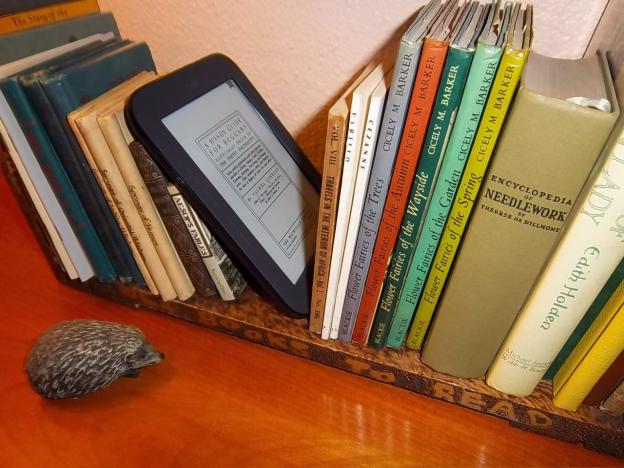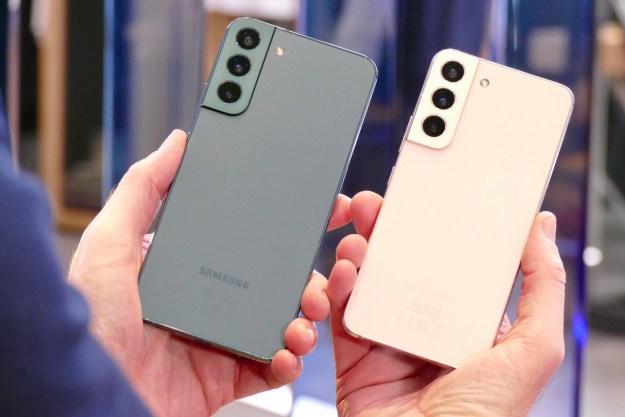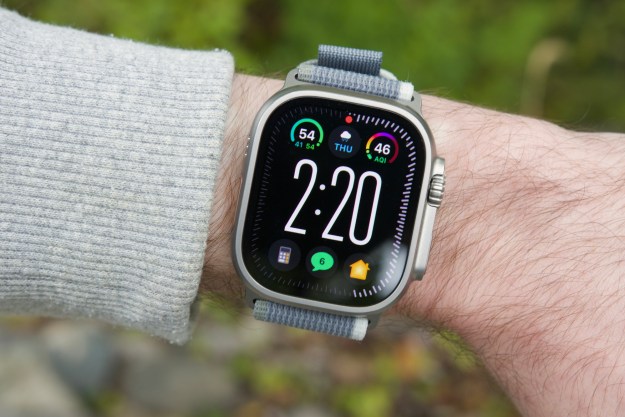
Two weeks ago, the annual Book Expo America (BEA) conference hit New York City. A gathering of publishers, booksellers, librarians, authors, reviewers, and book bloggers, BEA is the CES or E3 of the literary world. However, though e-books are a huge portion of the book world today, you wouldn’t know it from walking the show floor. The literary world is slow to adopt and acknowledge that it is now a part of the tech industry, and no where is that more apparent than the sad state of e-book lending for libraries.
Libraries have been able to lend e-books for many years, but the practice went mainstream in 2009 when Sony announced a partnership with the New York Public Library. Since then, libraries across the country have quickly adopted lending systems that work with most major e-book reading devices from Sony, Barnes & Noble, Kobo, and Amazon.
Four years in, borrowing an e-book from your local library is still a difficult and confusing process that varies wildly depending on what kind of e-reader or device you own. And once you finally figure out how to borrow a book, there are other frustrations. Often, the e-book you want is unavailable, either because it’s been checked out by another patron, it’s not in your library’s system, or it’s not available for your device.
So why is it so hard to borrow an e-book? It’s because none of the companies involved are working together. The e-reader makers, library lending software developers, and the publishers are all working at odds and it’s us who suffer. E-book library lending is broken.
The frustrating way we borrow e-books today
One of the early pioneers in the digital lending space was Overdrive, Inc., which developed the e-book lending systems used by most libraries today. Overdrive uses the same Adobe DRM (Digital Rights Management) scheme as Barnes & Noble, Kobo, Sony, and Google Books to protect files from piracy and manage the lending period of library e-books. That system was first devised for E Ink e-readers and the method for loading e-books onto those devices is about the same now as it has been since 2009.

Borrowing an e-book involves a ridiculous number of steps: You must create a free Adobe account, download Adobe software onto your computer, start an account with your local library, connect up those two accounts, and finally sideload the books onto the e-reader via USB. With some devices it’s a bit easier – Sony’s latest Reader has a Library app that hooks into Overdrive with fewer steps – but this tedious process is what most library patrons must go through. And if you’re not tech-savvy or don’t have access to your own computer, the whole thing is even more frustrating.
Up until about two years ago, tablets and smartphones were more difficult, and often impossible, to use with library lending systems. But then 3M announced an e-book lending service built to mimic iBooks and other iOS and Android e-book buying apps. 3M’s Cloud eBook Lending doesn’t rely on Adobe IDs and is designed so that library patrons only have to enter their information once and not over and over. Overdrive also finally released mobile apps around that time, and independent e-book apps like Aldiko started to work with Adobe so that users could add their ID and sideload books on their Android devices. Even with these more user-friendly systems librarians still have to help confused patrons navigate it. Smartphone and tablet lending is easier than it was; E Ink device lending remains a major problem.

Amazon improves lending
A few years ago, Amazon tried to solve the issue by connecting library lending to its Whispersync service. Once you hook up your Kindle and library accounts, they can send e-books to their Kindle from the library’s website and it syncs just like a purchased book. Though this is a big step forward, very few of the other e-reader makers followed suit. This kind of easy synchronization wouldn’t be hard to implement on the Nook Simple Touch or the Kobo Glo, Touch, or Mini. So, why hasn’t it been?
We asked Michael Tamblyn, Chief Content Officer at Kobo, if a Whispersync-like system was in the works for the company’s E Ink e-readers, and he said that it wouldn’t be easy because “…there are a lot of different players …there are a lot of moving parts.”
“We’d love to make that integration possible,” he said, but Kobo relies on Overdrive for library lending. He encouraged us to go talk to them about it. When we did, Overdrive’s David Burleigh said that Kobo needs to partner with them if they want a more integrated lending system. Around and around we went.
Remember that 3M Cloud eBook Lending system for smartphones and tablets? We asked 3M if it planned to ever support e-readers, many of which can now load apps, but representatives didn’t seem to care about E Ink devices. Perhaps because 3M has it’s own e-book reader designed specifically for libraries to lend out to patrons with its easy system. Book lovers can choose the e-books they’d like to read, then get the 3M Reader from the librarian, scan their barcode, and be done. The only hitch is that most libraries haven’t yet adopted 3M’s system (most use Overdrive).
All the pieces to make e-book lending simpler, easier, and more streamlined are available right now. The problem is that no one is working together to solve the problem. Each device maker has its own agenda. But even if all of these issues found a solution tomorrow, there’s still one other major hurdle: book publishers.
The elephant dinosaur in the room
Once you get past the technical hoops of connecting your library to your e-reader, you’ll figure out fast that publishers have decided to force libraries to treat e-books like paper books, so only one person can check them out at a time. The library can only check out as many copies of an e-book as they’ve purchased or licensed from publishers. Seems like an antiquated way of going about things, right? It gets worse.
Publishers also decided that since e-books don’t wear out the way paper books do, they need to put limits on how many times a title can be lent before the library has to buy a new copy. For some publishers, the e-book “wears out” after 26 uses. Other publishers put a time limit on it, allowing a library to loan an e-book for a year before having to renew what amounts to a license fee. The publishers that still allow libraries to buy an e-book and loan it out forever without restrictions often charge a very high price for each book.
Publishers just don’t seem to like the idea of e-book lending at all. Despite all of the data about how libraries help with book discovery and lead to greater recognition for books, and more sales, publishers and other people in the book business still balk at the idea of people getting access to books for free.

During the BEA panel E-Books From Libraries: Good For Authors?, Simon & Schuster CEO Carolyn Reidy revealed some of the thought process behind the publisher’s new library e-book pilot program.
“If you could get every book you wanted free, why would you ever buy another one? That’s the question we had about it in our first meeting. … That is the danger. You could literally undermine the market for every author and for [the publishers]. … Obviously, there is some discovery through libraries. … We’ve always believed that the cultural contribution of libraries is important. But this frictionless ability for people to download books does make a sea change difference.
What changes with digital is that you can sit at home and if you have a library card you can order any book, you never have to go anywhere. … There is a real difference between a digital file and a physical book. The fact that you have to go to the library and pick it up and check it out versus hit a few buttons.”
Simon & Schuster chose to go with 3M Cloud eBook Lending for its pilot program and this is likely the reason why Reidy thinks the process is so easy. Librarians we spoke to pointed out that even supposedly smooth systems still require a lot of technical help from library staff. Libraries are often visited by people with minimal access to technology, so they aren’t savvy with it, and those who can’t afford to own a smart device. The process is certainly not as frictionless as Reidy claims.
When this was brought to her attention, she dismissed the notion. “It may be difficult to download a file onto an e-reader — although most of them are made so it’s not — but let’s just say that it is today. It could be completely different in six months the way technology goes.”
Treating people like pirates
Even if it was an easy process for everyone across the board: so what? Why must barriers be erected between library patrons and the books they’d like to read?
The idea that e-books are a scary new reality was shared by other members of the BEA panel, including moderator Ginger Clark, an author agent. She said that the fear and worry around e-books in libraries is “because they can be pirated quite easily.” But e-books from most major online bookstores are pirated as easily as those from libraries; they use the same DRM scheme. If a person’s goal is to get an e-book for free and keep it forever instead of just sticking to the 1-3 week lending period, why wouldn’t they just pirate it on a torrent site instead? Navigating the library system isn’t an efficient way to steal books. Why is there an assumption that library users are so much more likely to steal a book? It’s also maddening in the face of data (offered by Overdrive President Steve Potash) that piracy of library e-books isn’t even a problem.
As frustrating as publishers are being on this issue, there is some good news. Many are starting to realize that some of their draconian practices are hurting rather than helping them. Take the practice of “windowing” where a publisher waits a few months or a few years to make new titles available to libraries to purchase. The original thought was that doing this would force people who really wanted to read a book to buy it instead of waiting. Instead, it just led to more piracy. Due to this, that practice is on its way out.
It’s clear that publishers are still driven by the fear of piracy, just as the music industry was and the movie/TV industry is now. And though there is always lip service to the notion of not making the same mistake that the music industry did, the book industry appears to be on a similar path: treating its customers like criminals or potential criminals. That is unwise on a number of levels, but particularly when it comes to libraries. People borrow e-books from libraries because they want to do the right thing and are committed to following the rules. Why would you want to alienate those readers?
Ask A Librarian
E-book library lending is currently an alienating process and, without cooperation, it won’t ever be fixed. Hardware and software makers need to create more streamlined processes for every device, publishers need to understand the technical side of lending and stop being driven by irrational fears, and everyone could benefit from listening to librarians. American Library Association President Maureen Sullivan, who was also on the BEA panel, put things into perspective at the end of the panel:
“…this is the classic example of disruptive innovation. It causes a lot of misunderstanding, it brings fears to light. … When we experience disruptive innovation, it’s much more effective to think not ‘either/or’ but ‘and’.”
Hopefully, the book and tech industries will listen.


